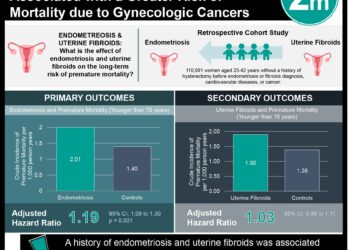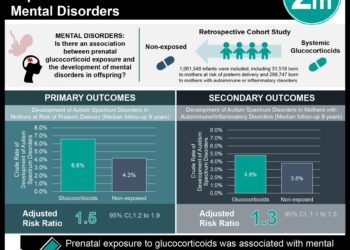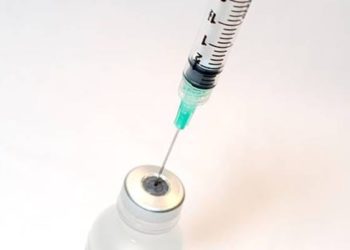Young women now more likely to contract genital Herpes Simplex 1 (HSV-1) than HSV-2
Jan 20th – HSV-1 infection in young women is more likely to be genital than oral.
 [tabs tab1=”2MM Rundown” tab2= “2MM Full Report” tab3=”About the Authors”]
[tabs tab1=”2MM Rundown” tab2= “2MM Full Report” tab3=”About the Authors”]
[tab]
Image: PD
1. Young women (18-22) are more likely to acquire HSV-1 infection than HSV-2.
2. HSV-1 infection in young women is more likely to be genital than oral.
3. HSV-2 infection is more likely in non-Hispanic blacks, while HSV-1 infection more likely in non-Hispanic whites.
This study demonstrates a significant shift in the etiology of herpes infections. Several thousand study subjects, drawn from 50 sites across the US and Canada, speak to the applicability of results in these regions. HSV-1 infections are now more than twice as likely as HSV-2 infections overall and three times more likely to occur in the genital tract. Additional findings of this study include an increased incidence of HSV-1 among young women as well as differential acquisition of HSV-1 and HSV-2 by race. Importantly, most herpetic infections identified were clinically asymptomatic, suggesting that clinical suspicion for HSV infection in young, sexually active women should be high even among patients without classic vesicular presentation.
Click to read the study in Clinical Infectious Diseases
Click to read an accompanying editorial in Clinical Infectious Diseases
[/tab]
[tab]
Image: PD
1. Young women (18-22) are more likely to acquire HSV-1 infection than HSV-2.
2. HSV-1 infection in young women is more likely to be genital than oral.
3. HSV-2 infection is more likely in non-Hispanic blacks, while HSV-1 infection more likely in non-Hispanic whites.
Primer: The Herpes Simplex Viruses (HSVs) are highly virulent double-stranded DNA viruses that commonly cause genital and oral ulcerative lesions. HSVs are neurotropic and can persist as a latent infection with the potential for re-activation with stress, UV light exposure, immunosuppression, or illness, with recurrent lesions and/or disseminated disease. Genital HSV infection is additionally implicated in a significantly increased risk for acquiring HIV and other sexually transmitted infections. Classically, the HSV-2 subtype has been the primary cause of genital lesions, while HSV-1 has commonly caused oral lesions, or cold sores. Recently, however, studies have suggested that there is a shift in genital HSV infection epidemiology, from predominantly HSV-2 to increasing HSV-1 infection. This paper characterizes this changing epidemic in the United States, focusing specifically on the demographic differences seen in HSV infection.
Background reading:
This [prospective cohort] study followed 3438 women from the control arm of the HERPEVAC HSV-2 vaccine trial for 20 months. Patients were aged 18-30 and were initially seronegative for both HSV-1 and HSV-2. Serum was obtained periodically to identify asymptomatic seroconversion, and patients with suspected herpes symptoms were evaluated with oral and genital samples. 127 (3.7%) patients became infected with HSV-1, and 56 (1.6%) became infected with HSV-2. The majority of infections were genital and predominantly caused by HSV-1. Younger patients (18-22) were significantly more likely to acquire HSV-1 and to be asymptomatic from their infection. The rate of HSV-2 infection was significantly higher in non-Hispanic blacks, while the rate of HSV-1 infection was higher in non-Hispanic whites.
In sum: This study demonstrates a significant shift in the etiology of herpes infections. Several thousand study subjects, drawn from 50 sites across the US and Canada, speak to the applicability of results in these regions. HSV-1 infections are now more than twice as likely as HSV-2 infections overall and three times more likely to occur in the genital tract. Additional findings of this study include an increased incidence of HSV-1 among young women as well as differential acquisition of HSV-1 and HSV-2 by race. Importantly, most herpetic infections identified were clinically asymptomatic, suggesting that clinical suspicion for HSV infection in young, sexually active women should be high even among patients without classic vesicular presentation.
Click to read the study in Clinical Infectious Diseases
Click to read an accompanying editorial in Clinical Infectious Diseases
By [EH] and [DB]
© 2013 2minutemedicine.com. All rights reserved. No works may be reproduced without written consent from 2minutemedicine.com. Disclaimer: We present factual information directly from peer reviewed medical journals. No post should be construed as medical advice and is not intended as such by the authors or by 2minutemedicine.com. PLEASE SEE A HEALTHCARE PROVIDER IN YOUR AREA IF YOU SEEK MEDICAL ADVICE OF ANY SORT. Content is produced in accordance with fair use copyrights solely and strictly for the purpose of teaching, news and criticism. No benefit, monetary or otherwise, is realized by any participants or the owner of this domain.
[/tab]
[tab]
 Emilia Hermann: Emilia is a 3rd year MD candidate at the University of Pennsylvania.
Emilia Hermann: Emilia is a 3rd year MD candidate at the University of Pennsylvania.
 Devika Bhushan: Devika is a 4th year M.D. candidate at Harvard Medical School.
Devika Bhushan: Devika is a 4th year M.D. candidate at Harvard Medical School.
[/tab]
[/tabs]





